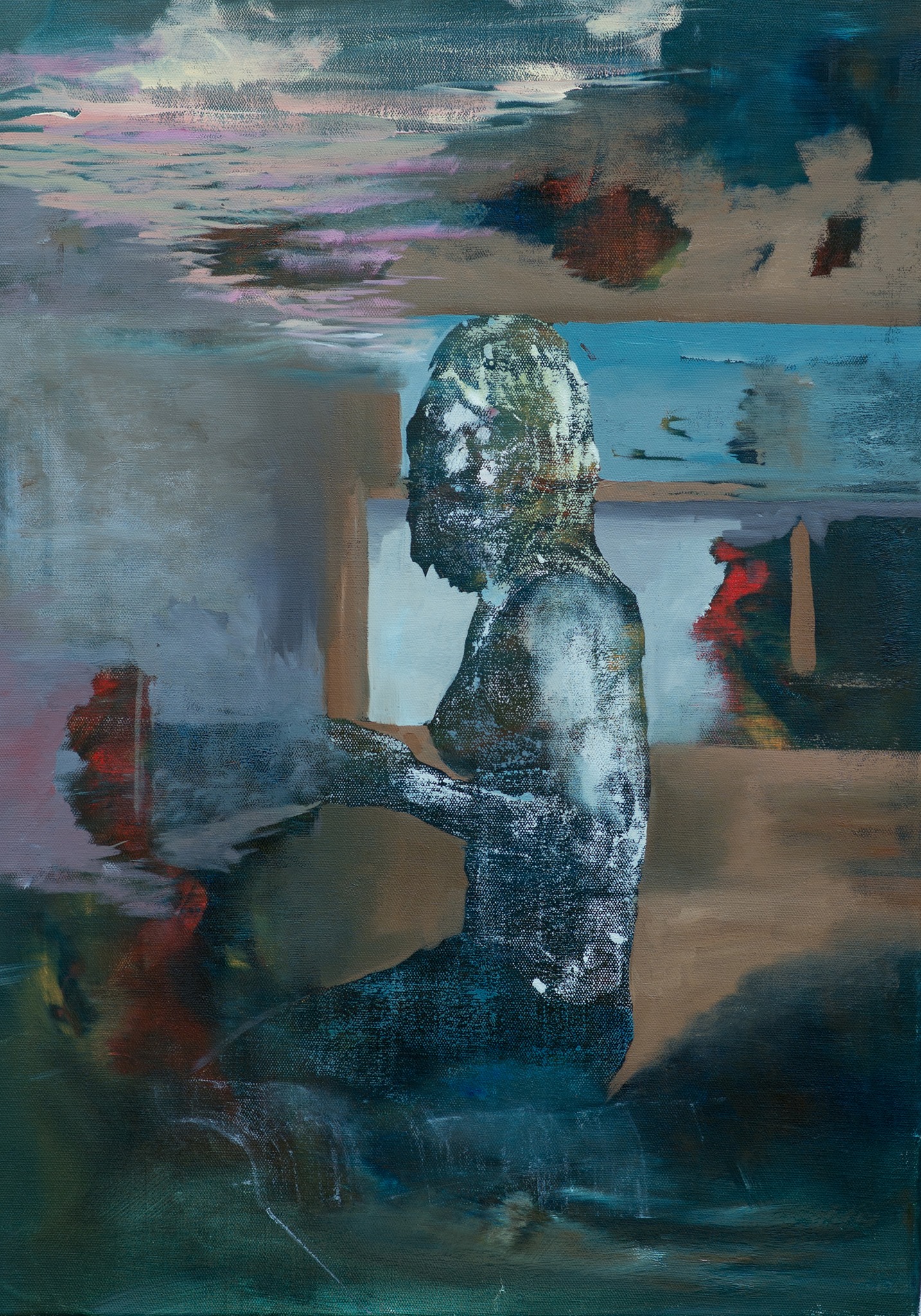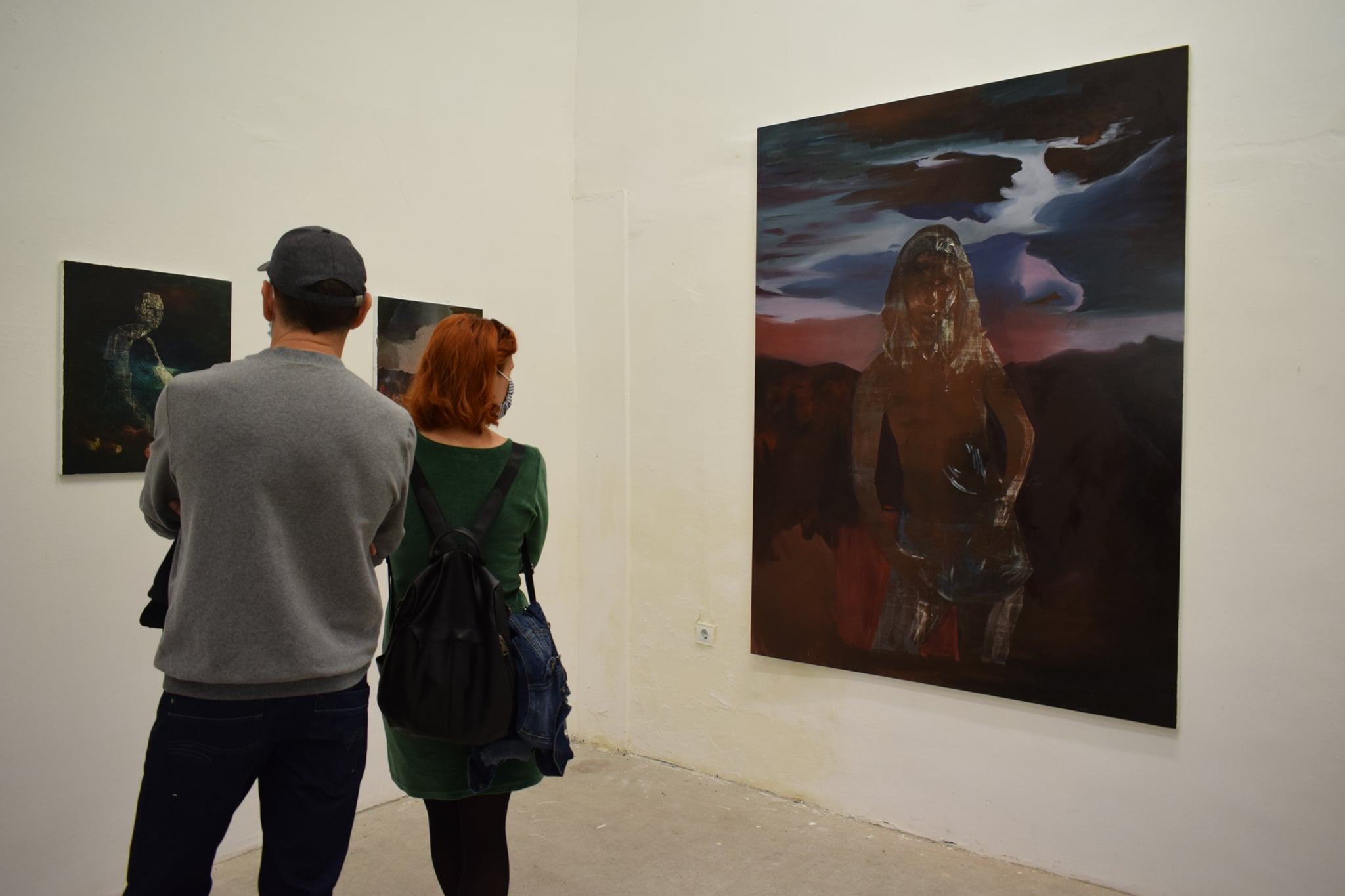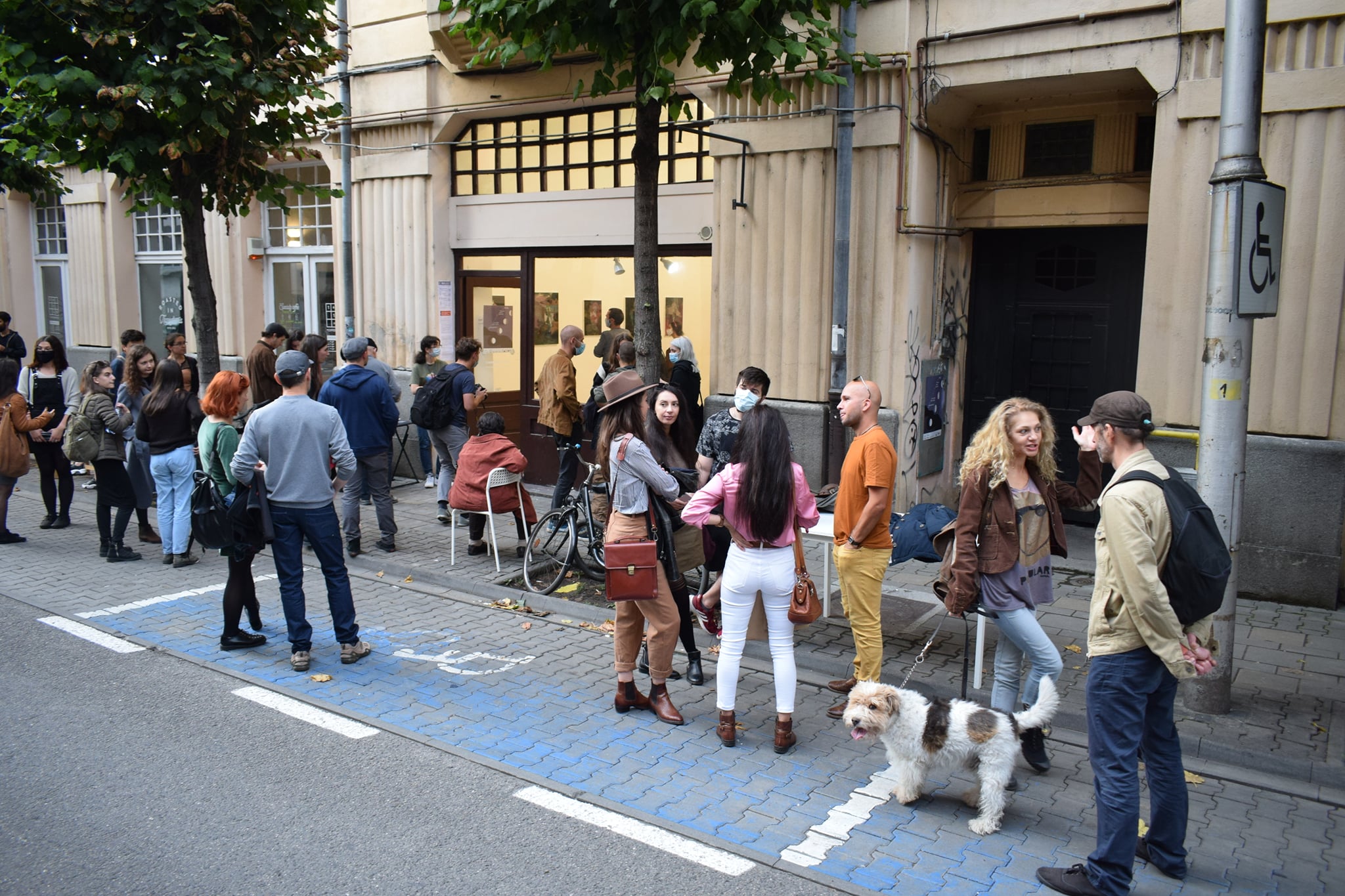FOMO
Csóka Szilárd-Zsolt @ Camera K’ARTE
Opening → 03.10.2020 → 18.00
……………………………..
EN
In today’s world, humanity lost its connection to what’s called natural. We live under the tyrannical rule of advanced technologies and contemporary ideological trends. As a result, we become unnatural, even false. We became objects and puppets.
This image of man is rendered in my paintings – characters that are easily recognized and identified. That’s a body, but no longer a human. It has no flesh, only shapes, that give us the feeling of alienation and undermine the things that make us human. Instead of skin we have a dry, mask-like cover. It is lifeless and deprived of nerves: it doesn’t hear, it doesn’t speak, it doesn’t see. The gaze doesn’t reflect light, it only absorbs it. It doesn’t confront, just stares blankly. Through the lenses of the fashionable selfies of our age, we stare into a nihilistic inner self: the negative faces, the portraits and the fake smiles.
This fake sensation of reality is deaf. Man is absurd – a fashion mannequin, an unrealistic figure.
The ash-grey, the rosy brown colours on the faces, tick hair on the head – a creature that is lifeless, but not yet dead.
The dead are silent. They are veiled under a gracious hiddenness and divine peacefulness. Humans are dull, who can’t hear the deafening noise they make, and can’t see the masks they put on themselves.
The question of life and death doesn’t interest me/ I don’t wish to pursue the question of life and death, because there was never a life here. The ‘here’ is dominated by an infinite materialism: busted background, patches of life every here and there, but no life and no death. Just the nihil.
All of this is captured in the lonely melancholy in the gesture of the “body” taking a stagy photo with their smartphones.
……………………………..
??
A mai világban az emberi élet „mű”-létté vált, többek között az ijesztően fejlett technológiák és a kortárs ideologikus divatok miatt, amely a társadalmat alapjaiban hatalmában tartja. Ennek következtében hamissá válik emberi mivoltunk, talán a történelem során a legerőteljesebben. Egyszerűen tárgyakká, mondhatni bábukká váltunk.
Ez az ember-kép megőrizte indexikus jellegét, egyértelműen, felismerhetően, azonosítható az egyén. „Ő az”. De ő, már nem ember. Mert ez nem hús, ezek csak emberi formák, amelyek tagadják azt az anyagot ami emberré, személlyé tesz. Bőrünk helyet egy olyan borító anyag jelenik meg, amelyben nincs vér, nincsenek idegek, mert nincs érzék: süket, néma és vak. A tekintet nem tükröz, hanem elnyel, illetve magába zár. Nincs szembenézés, sem szembesülés, csak üres bámulások, meredések. Ez egy belső nihil kívülről láttatva, a kor divatos selfijén keresztül, negatív arcokkal, portrékkal, hamis mosolyokkal.
Ez az emberi valóság-talanság süket. Latinul a süket absurdus, s az ember ily módon abszurd: divatos műanyagbábú, abszurd figura. Az arcokra feszülő hamuszürke, szurokbarna szín, a masszív tárgyként fejre tapadó hajtömegek mind valami élettelen, de nem halott lényt idéznek meg.
Hiszen a halottnak van egy meghitt csendje. Ezzel szemben ezeknek zajos süketségük van. Nem az élet-halál kérdése érdekel, mivel itt sosem volt élet. Itt egy időtlen végtelen mű-anyagiság dominál. Feldarabolt háttér, néha van egy-egy életre utaló folt, de itt nincs élet és nincs halál, itt nihil van.
Mindezt a legmegfelelőbben valami olyan magányos melankóliával lehet megragadni, ami abban a gesztusban van, ahogyan az okostelefonnal egy nagyon szép műesztétikás fotót készít magáról az “ember”.
??
În lumea cotidiană viața omului a devenit un fel de „artefact”, datorită tehnologiei și a trendurilor ideologice contemporane, care domină într-un mod fundamental societatea. Ființa umană a devenit în sine una de consum, una extrem de artificială, cum nu a fost niciodată în istoria umanități. Omul a devenit un obiect de rând, o marionetă.
Această tipologie a omului este reprezentată în picturile mele – omul indexat, personaje care sunt ușor identificabile și recognoscibile. Acest om există, trăiește, dar parcă și-a pierdut umanitatea. Îi recunoaștem aparența, silueta umană, dar alienarea acestuia vorbește despre îndepărtarea lui de tot ce ne definește ca oameni. Parcă și-ar fi schimbat pielea, asemenea unui șarpe, cu o un material anorganic, artificial și străin. Lipsit de viață și de sensibilități: totul e surd, mut și orb. Privirea nu mai reflectă lumina, doar o captează, o înghite. Nu mai există adâncimi, nu mai confruntă, doar privește în gol. Prin lentila camerei mobile, a selfiurilor tot mai la modă azi, ne holbăm admirativ în nihilismul interior admirându-ne trivial expresiile vulgare sau autoportretele cu zâmbete false.
……………………………..
Expoziția face parte din programul Noaptea Albă a Galeriilor Tîrgu Mureș 2020 – Proiect co-finanțat de Primăria Municipiului Târgu Mureș prin concursul de proiecte culturale.




